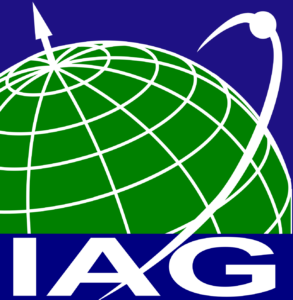SC 2.2: Geoid, Physical Height Systems and Vertical Datum Unification
Chair: George Vergos (Greece)
Vice-Chair: Rossen S. Grebenitcharsky (Saudi Arabia)
Terms of Reference
A global height reference frame with high accuracy and stability is required to determine the global changes of the Earth. A major step towards this goal was taken by the IAG resolution (No. 1) for the definition and realization of an International Height Reference System (IHRS), adopted at the IUGG 2015 meeting in Prague and the IAG resolution (No. 3) for the establishment of the International Height Reference Frame(IHRF), adopted at the IUGG 2019 meeting in Montreal. Given the work carried out for the general methodological scheme for geoid and potential determination, the data prerequisites and practical studies, it has become apparent that the IHRS should be globally realized with common standards in terms of the processing strategy.
Given the versatility (in terms of the topographic and geomorphological characteristics) of realized IHRF sites, data availability and data quality issues, the achieved accuracy in the realization of potential values is still far from the wanted ±0.1 m2s-2 (equivalent to ±1 cm) error. Moreover, the use of all available data sources, e.g.,GNSS-derived heights, satellite altimetry, topography/bathymetry, local gravity (terrestrial, airborne and marine) as well as the latest global geopotential models, should be properly studied to model the high-frequency part of the gravity field spectrum. Such combination of heterogenous data has been deemed as mandatory in order to reduce the omission error as well as to properly model the contribution of topography. Furthermore, the absence of local gravity data posses an additional problem in local geoid and potential determination, which in that case should rely solely on the best available GGM and topographic effects.
Traditional levelling might also be integrated on a regional or local scale, as they form the natural means to realize physical heights and provide the link to tide-gauge data that usually realize local vertical datums. The unification of local/national verti-cal reference frames to regional ones and their link to the IHRF is of main importance, employing local geoid realizations and datum definitions. Finally, given that the current realization of the IHRF refers to a (quasi)static one, the temporal variations of the geoid, physical heights and the potential are of paramount importance to be in-line with the IHRF conventions.
The IAG SC 2.2 aims at bringing together scientists concerned with methodological questions in geoid and potential determination, who in different ways contribute toreach the above-mentioned goal of a global height system realization and unification as well as its temporal variations. It includes topics (state of art methodologies for processing, analyzing, utilizing data, unifying datums, etc.) ranging from regional gravimetric geoid determination to the realization and implementation of IHRS in view of the existing regional/local/national height system realizations and 3D verticaldatum (geoid) definitions.
Objectives
The IAG Sub-Commission 2.2 (SC2.2) promotes and supports scientific research related to methodological questions in geopotential, geoid and height determination, both from the the oretical and practical perspectives. The former refers in particularon methodological questions and practical numerical applications contributing to the realization of IHRS with the required sub-centimeter accuracy, the combination of local/regional vertical reference frames and their unification to the IHRF and the estimation of geoid, physical heights and the potential temporal variations. This includes for instance::
- Realization of the International Height Reference System (support to the “International Height Reference Frame Computation Center – IHRF CC”).
- Height system unification at regional scales and unification to the IHRF.
- Studies on W0 determination.
- Studies on data requirements, data quality, distribution and sampling rate to reduce the omission error to the sub-centimeter level in different parts of the world.
- Contributions of alternate data sources, such as altimetry sea surface heights, absolute SAR, InSAR and GNSS geometric heights to geopotential modeling and geoiddetermination at reference benchmarks.
- Investigation of the theoretical framework required to compute the sub-centimeter geoid with the support of WG2.2.1 and various ICCT SG and WG on the geoidmodelling and height systems.
- Investigation of the error budget of potential determination and vertical reference frames unification.
- Investigation and benchmarking of alternative regional geoid determination methods and software.
- Studies on theoretical and numerical problems related to the solution of the geodetic boundary value problems (GBVPs) in geoid determination.
- Studies on time variations of the gravity field and heights due to Glacial Isostatic Adjustment (GIA) and land subsidence.
- Development of relativistic methods for potential difference determination using precise atomic clocks (support of Working Group X.3).
- Investigating the role of traditional levelling in future regional/local height system realizations combined with all available data linked to Earth’s geopotential determination.
- Investigating the utilizations of already defined national and regional geoid models together with new types of Geodetic Earth Observations (GEOs) and based on theoretical and practical developments linked to mixed GBVPs.
- Investigating temporal geoid, physical height and potential variations from current gravity field missions (GRACE/GRACE-FO), higher-resolution hydrological landsurface models and glacial surface mass balance models as well as the impact of future mission concepts.
Program of Activities
- Organizing meetings and conferences.
- Organization of local/regional workshops for the promotion of IHRF related studies.
- Inviting the establishment of Special Study Groups on relevant topics.
- Reporting activities of SC2.2 to the Commission 2.
- Communication/interfacing between different groups/fields relevant to the realization of IHRS.
- Conceptual and methodological support to working groups for national®ional vertical datums and reference frames definitions as realizations of IRHS.
Steering Committee
Georgios S. Vergos (Greece); Chair
Rossen S. Grebenitcharsky; Vice-Chair
Riccardo Barzaghi (Italy)
Thomas Gruber (Germany)
Claudia Tocho (Argentina)
Jianliang Huang (Canada)
Xiapoeng Li (USA)
Laura Sanchez (Germany)



